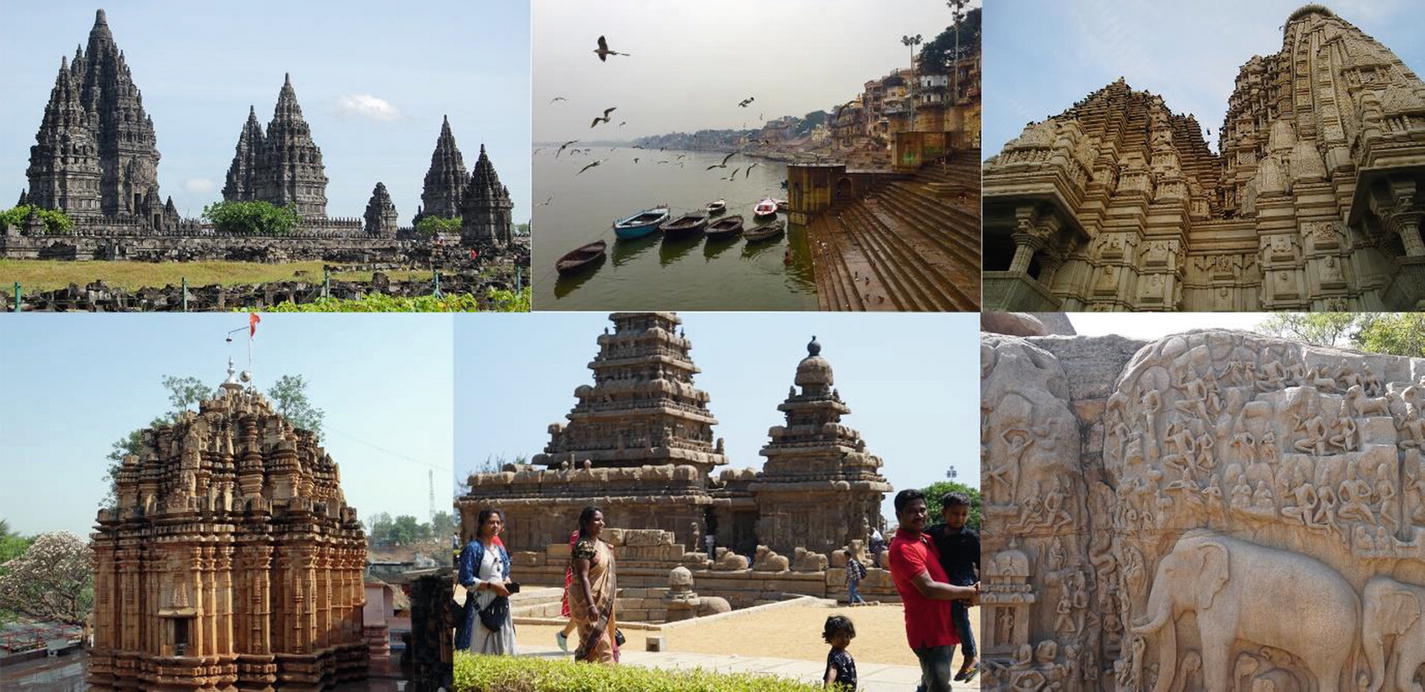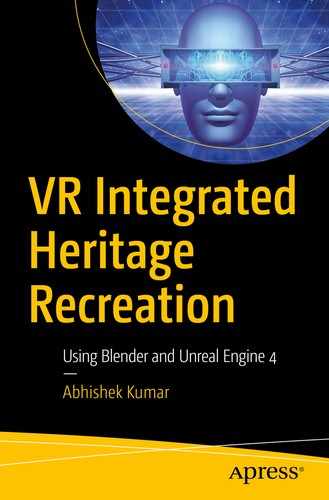If you are a beginner, this is a good place to learn some basics about the software packages and understand how to handle them.
If you are an experienced artist, this book will teach you how to expand your skills and complete a practical project.
Developing and designing a complete project is hard and takes a lot of patience and dedication. Without a proper reference or guide, it is easy to get lost and give up. This book aims to document the important steps of the creation process so that you can understand the steps you must take to complete your projects.
This book is divided into multiple chapters, each covering a step of the development process in a systematic manner. It is very important that you go through this book sequentially and complete each chapter fully before proceeding. Each chapter will give you insight into the topic that it covers.
You must translate the written instructions of the chapters into physical actions that you perform on your computer. It is easy to make mistakes during that process, so it is important to stay vigilant. If you do this correctly, you will have a good portfolio piece to show or personal work that you can admire. Knowing the full process of creating a large and complex asset from start to finish, and then integrating it into a game engine, opens lots of potential job opportunities for you. It not only shows that you have good planning skills but also that you can execute those plans well. I hope you are excited about the journey that you are going to take. Let’s get started!
Re-Creating History Using Computer Graphics
History tells us who we are and how we became what we are today. It is important to understand the origins of our culture and remember those who were responsible for laying the foundations of modern society. Ancient art and architecture are the cultural symbols of our past and studying them reveals a lot about the lives and thought processes of the people who constructed them. Each monument, sculpture, and painting tells a story of that era. Not only that, they also indicate how sophisticated construction methods and advanced tools were used. It is our responsibility to preserve these priceless artifacts in whichever way possible.
A lot of our prestigious heritage currently lies in ruins. Once bustling cities are now abandoned and decaying. Many empires that once thrived have completely disappeared; only their echoes remain in the form of the relics they left behind. The main purpose of history reconstruction is to re-create these places and structures in the form they had in their glory days. Computer graphics can be used to reconstruct ruins that are dilapidated and cannot be reconstructed physically, sometimes because it’s cost-prohibitive to do so. So, using modern modeling, texturing, and rendering techniques, we can bring these ancient monuments back to life, to their former glory. Game engines can enhance this undertaking by introducing new elements, like the ability to explore the constructed environment in real time. This not only increases the viewer’s immersion into this artificially created world, but also allows them to see the monument from different perspectives and truly appreciate it. This could revolutionize the way in which we teach history and perhaps draw more people into studying it.

Old monuments of India
To appreciate the rich heritage of any region or country, we need to be aware of its history. The history is weaved on the discovery and reconstruction of the remnants left by people of the past. These remnants, found in the form of buildings and objects, become the main source of heritage and history. It is imperative to communicate the history of these ancient remains to laypeople and children. A reliable means of imparting information about heritage, particularly of the tangible nature, is visual presentation, which is easy to grasp and interesting. Drawings and visual reconstruction of old structures by computer graphics is one of the recommended means. With the aid of computer graphics, it may be possible to re-create the original form and nature of such important, but dilapidated, monuments.
Virtual Reality (VR) Integration
VR is a very hot and trending subject in the digital industry. VR headsets are getting more and more affordable by the day and people find the immersiveness that they provide very appealing. The use of VR is not restricted to the entertainment industry; it’s used heavily in architectural visualization, education, medical training, military simulation, and more. The architectural visualization industry (ArchViz) heavily uses VR technology to create highly immersive architectural walkthroughs for clients. This allows clients to explore scenes in depth, rather than simply seeing things on a flat screen.
You can download free ArchViz demos from http://oneirosvr.com/download/. This will give you a good idea why it is preferred and so much in demand
Another great application of VR is for medical education, or even just education in general. The education industry has been looking for a more fun and intuitive way of imparting knowledge onto students. VR provides something that a plain classroom setting cannot provide, education with a fun aspect. Watching a human anatomy class in 3D or seeing a VR walkthrough of the Pantheon in history class is exciting and memorable. Since the experience is so engaging, the student is much more likely to remember the information.
Another big reason that the educational field is slowly adopting VR is because it is more convenient than actually travelling to a different country or bringing in some complex or fragile thing to the classroom and experiencing it. Students can see or experience something that is far away or impossible to bring into the classroom using VR.
Military simulations use VR to train recruits in various kinds of scenarios. This is not limited to combat simulations, but includes various kinds of emergency situations. This can be something like a ship or a submarine that has suffered hull breach and is slowly sinking. Or it could simulate a combat aircraft attack. These are just some military applications of VR. This approach can also be extended into training other emergency responders. From simulating burning buildings to natural disasters, VR training simulations are used by many departments across the world.
VR use in video games is nothing new and is now widely known. After the release of Half-Life: Alyx by Valve software, VR gaming gained huge popularity and many more people understood its immense potential. There is now a huge demand for VR developers, as people are very much interested in playing highly immersive VR games. With the rapidly advancing technology, the day is not far off when VR games will have an audience base as large as traditional gaming media.
The future of VR is bright. In this day of rapidly evolving technology, it is important not to get left behind. The main purpose of this book is to give you all the information you need to kick start your journey into the field of VR architecture design and game development.
Topics Covered
This book is an introductory course aimed at aspiring artists who want to expand their horizons into the digital creative industry. The main purpose of this book is to lay out each stage of the development process for making a complete scene from scratch and explore these stages in detail. Each chapter covers a stage that falls into the production pipeline of asset development. From preparation to execution, you can expect full documentation of the steps that you must take to get to completion.
After brief introductions in Chapters 1 and 2, we come to Chapter 3, where we discuss where to gather the needed resources. Then in Chapter 4, we start with design visualization, where we decide what we are going to make and determine the plan of action.
In Chapter 5, we finish blocking out our asset, which is a very important step, as it allows you to move and modify the shapes without many problems. Next, we start detailing the model and go over the common modeling techniques used in the industry.
In Chapter 6, we proceed to unwrapping our models. Many people dread this process, but we will go over this in detail so you can understand how to efficiently unwrap your models. Despite being arduous in nature, unwrapping is an important step in the process of asset design, so everyone must understand it properly.
In Chapter 7, we will use the Substance Painter to see how we can create PBR materials for our assets. You’ll learn how to texture them while finding the balance between realism and design. We will use external websites to get assets so you don’t have to mix them using the power layer system of the Substance Painter. We will then convert this created material into “smart material,” which we can easily reuse and repurpose for other meshes. That way, you don’t have to create material from scratch every time you bring in a new model.
In Chapter 8, we learn how to create foliage assets for our project. We will use external tools to help us with this process, as the industry prefers specialty designs when creating foliage assets. We will use a tool called TreeIt to create trees and use Quixel Megascans to access photorealistic, 3D-scanned grass assets that have unmatched quality.
In Chapter 9, we export our assets from the respective tools to Unreal Engine 4. We cover the export settings and the proper formats for exchanging files. We also see how to create lightmap UVs, which are very important when using Unreal Engine 4. This is a special type of UV created in the 3D modeling application.
After exporting assets, Chapter 10 shows you how to import these assets into Unreal Engine 4. We learn how to manage and organize imported assets. We also learn how to use the Properties Editor window to modify our assets.
In Chapter 11, we see how to set up the materials for our imported assets. We learn to use the Materials Editor and understand how the node-based workflow of the material editor works. We see the use of commonly used nodes and learn the different types of material setup. We will, of course, start with a very simple material setup to understand the concepts. After that, we will create a complex material setup that allows us to make some modifications to our materials directly inside Unreal Engine 4. We will also work with master materials and instanced materials and see how each differs and learn when we should use each one.
In the final chapter, Chapter 12, we jump into C++ and see how we can program our game to work in virtual reality. A VR headset is recommended to follow along in this chapter, but even if you don’t have one, you can still learn the basic concepts and see the programming side of the process. It is important to know at least the basics of programming so that you can understand how C++ works and how it is used to develop games.
